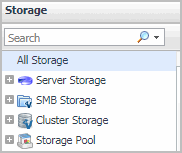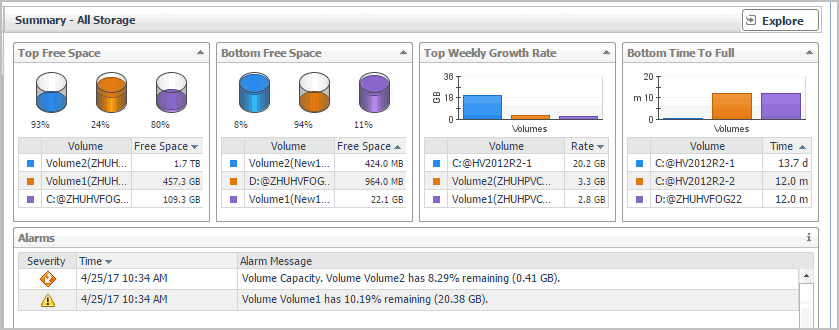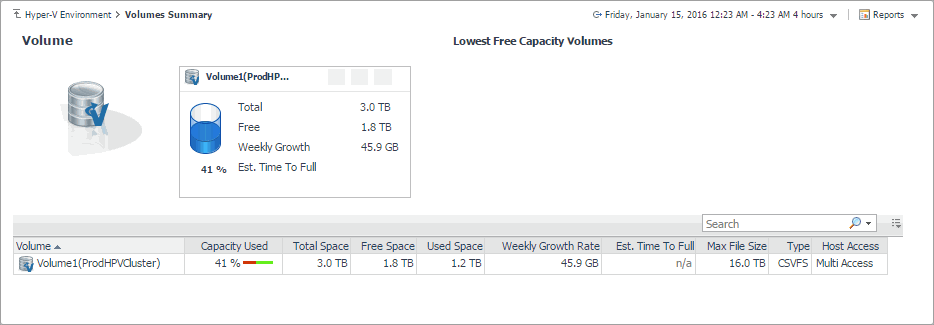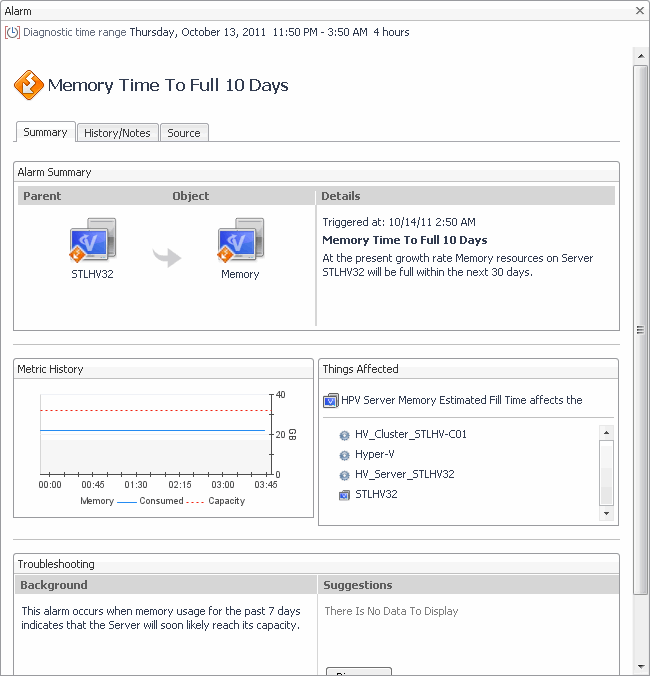Storage monitoring
A Microsoft Windows Cluster Shared Volume (CSV) is a shared disk available for read and write operations by all nodes within a Windows Server Failover Cluster. A Windows Server Failover Cluster is a group of computers that provides continued service when system components fail.
To review data collected about a specific volume or all volumes, make your selection in the Quick-View.
Storage view
The Storage view is a tree view. It lists the server volumes and cluster volumes existing in your environment, and shows their severity state.
This view appears in the Quick-View on the left when you select the Storage tile in the Virtual Environment view.

Selecting the All Storage node displays the overall resource utilization for all volumes in your integrated system and identifies the ones that consume the highest amount of system resources in the Summary - All Storage view on the right. Similarly, selecting a storage node shows storage-specific metrics in the Volume Summary view.
|
|
|
• |
Alarm severity. The state of the most recent alarm raised against the volume. | |
|
|
|
• |
All Storage. A parent node for the instances of all volumes that appear in this view. | |
|
|
|
• |
Server Storage. The parent node for the instances of all server storage. | |
|
|
|
• |
SMB Storage. The parent node for the instances of all SMB storage. | |
|
|
|
|
|
|
• |
Storage Pool. The parent node for the instances of all storage pools. | |
|
|
Drill down on: |
|
|
|
|
|
|
|
|
|
|
|
|
|
|
|
Summary - All Storage view
The Summary - All Storage view displays overall resource utilization information for all volumes in the selected service and identifies the elements that consume the highest amount of resources.
This view appears in the Quick-View on the left when you select All Storage in the Storage view.

This view is made up of the following embedded views:
Volumes Summary view
The Volumes Summary view displays complete details for all volumes in the selected service and identifies the ones that consume the lowest amounts of disk resources.
This view appears in the display area when you click Explore in the Summary - All Storage view.

This view is made up of the following embedded views:




